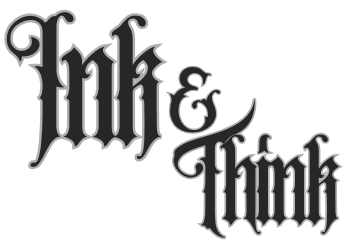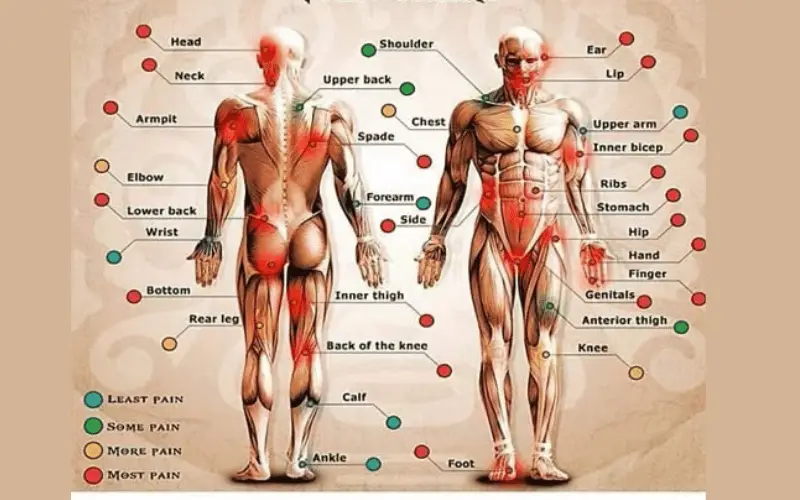Let’s be real for a second – tattoos hurt. Anyone who tells you otherwise is either lying or has some superhuman pain tolerance that the rest of us mere mortals can only dream about. That said, not all tattoo pain is created equal! Some spots on your body will have you breathing easy through your session, while others might leave you questioning all your life choices.
If you’re tattoo-curious but pain-anxious (totally understandable!), choosing the right placement for your first ink can make all the difference between “that wasn’t so bad” and “never again!” Let me walk you through the body’s pain map so you can make your tattoo debut as comfortable as possible.
Why Do Tattoos Hurt Anyway?
Before diving into specific placements, it helps to understand why getting tattooed hurts in the first place:
- Needle depth: Tattoo needles penetrate about 1-2mm into your skin to deposit ink in the dermis layer
- Repetition: Those needles puncture your skin between 50-3,000 times per minute (yikes!)
- Duration: Even small tattoos typically take at least 30 minutes, with your body experiencing this repeated trauma the entire time
The main factors that determine how much a specific spot hurts include:
- Nerve endings: More nerve endings = more pain signals
- Fat cushioning: Less fat = more pain (the needle feels more intense)
- Bone proximity: Tattoos over bone typically hurt more than fleshier areas
- Skin thickness: Thinner skin tends to be more sensitive
Now let’s get to the good stuff – the spots least likely to have you seeing stars!
Top 5 Least Painful Tattoo Spots
1. Outer Bicep/Shoulder
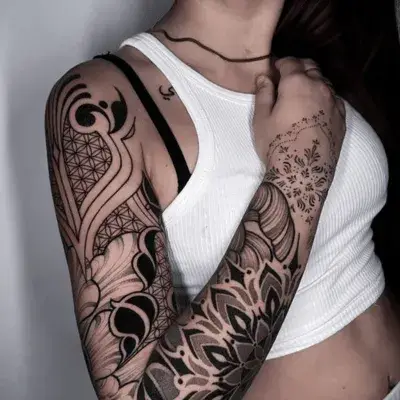
Your outer upper arm is basically the beginner’s paradise of tattoo placements. Here’s why:
- Plenty of muscle padding between skin and bone
- Relatively few nerve endings
- Skin isn’t usually stretched super tight
- Easy for you to see during the process (which helps with anxiety)
This area is perfect for medium-sized designs and tends to heal well too. No wonder it’s such a popular first-timer spot! Many people describe the sensation here as more like an annoying vibration than actual pain.
2. Outer Thigh
If you’re looking for maximum canvas space with minimum ouch-factor, the outer thigh delivers:
- Lots of fatty tissue creating natural padding
- Fewer nerve endings than inner thighs
- Far from bone in most body types
- Can easily be covered with clothing during healing
The outer thigh can handle larger designs and is one of the least sensitive areas of the body. Many first-timers describe the sensation as more irritating than painful – kind of like a cat repeatedly licking the same spot for an hour.
3. Forearm
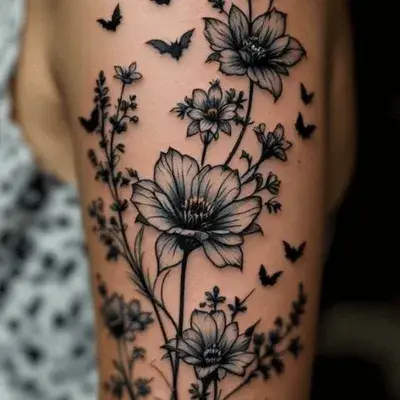
Forearms make for excellent starter tattoo territory for several reasons:
- Relatively thick skin
- Moderate fat and muscle coverage
- Good distance from major nerve pathways
- Highly visible placement (if you’re proud of your new ink!)
While the inner forearm is slightly more sensitive than the outer, the entire forearm area generally provides a comfortable experience. As a bonus, forearm tattoos tend to age well and resist fading compared to some other placements.
4. Upper/Lower Back (Center)
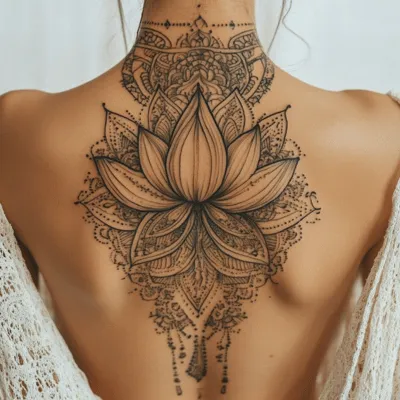
The central back area (think between your shoulder blades or lower back) offers a surprisingly comfortable experience:
- Thick skin with good muscle coverage
- Fewer nerve endings than many other body areas
- Can accommodate larger designs
- Easily concealed for professional settings
The main downside? You can’t watch the process, which some first-timers find increases their anxiety. But if you’re more “don’t tell me, don’t show me, just do it” about your tattoo, this might be perfect!
5. Calf

Last but not least, the calf provides a relatively pleasant first tattoo experience:
- Good muscle padding throughout
- Moderate nerve density
- Can handle detailed work well
- Shows off your ink during shorts weather!
Many people describe calf tattoos as feeling like a mild sunburn during the process. The outer calf tends to be slightly less sensitive than the inner portion.
Runner-Up Comfortable Placements
These spots aren’t quite as painless as our top five but still offer a relatively gentle introduction to tattoo pain:
Outer Shoulder
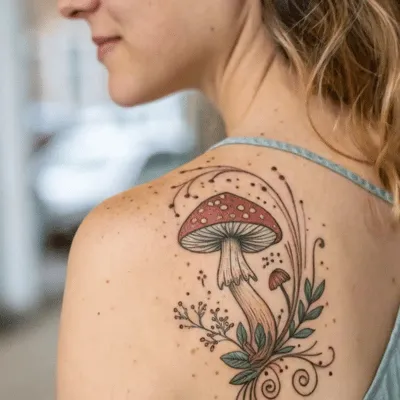
The rounded part of your shoulder (deltoid area) has decent muscle padding and fewer nerve endings. It’s also a classic spot for a smaller first tattoo.
Upper Chest (Away from Collarbone)
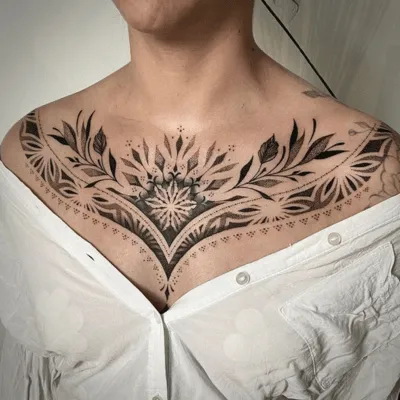
The pectoral area has good muscle coverage, though sensitivity increases dramatically as you move toward the sternum or collarbone.
Buttocks

Let’s not beat around the bush – your butt has excellent natural padding! The extra fatty layer means less pain, though the experience might be a bit awkward for your first tattoo.
Places to Absolutely Avoid for Your First Tattoo
For the love of all things holy, please don’t choose these spots for your tattoo debut:
Ribs
Thin skin + bones directly underneath + constant movement from breathing = pain city. Experienced collectors consider ribs among the most painful spots.
Ankles/Feet
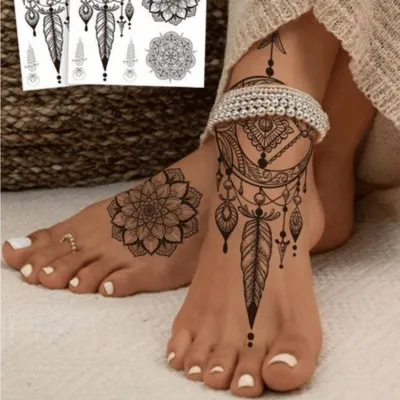
Minimal fat, lots of bones, and tons of nerve endings make for a particularly spicy experience. Add to that slower healing due to circulation issues and you’ve got a challenging first tattoo.
Hands/Fingers
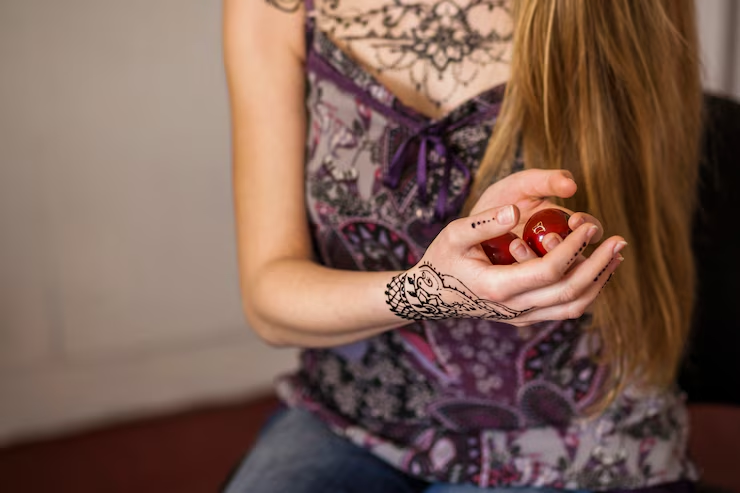
Besides being incredibly painful due to bone proximity and nerve density, hand tattoos often fade quickly and may require frequent touch-ups.
Neck/Throat
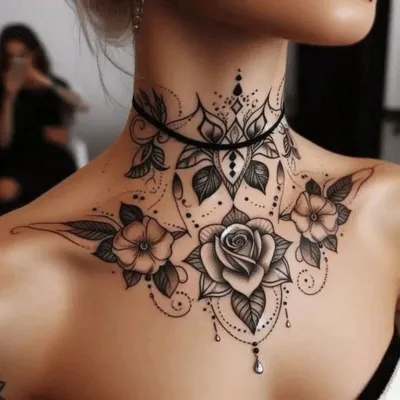
Beyond the intense pain, neck tattoos are very visible and might not be the best choice for tattoo newcomers still testing their ink commitment level.
Knee/Elbow Ditch
Any joint “ditch” (the bend of your elbow or knee) is notoriously painful due to thin skin and sensitive nerve clusters.
Pro Tips to Minimize Tattoo Pain (Regardless of Placement)
Even in less painful areas, these tips can help make your experience more comfortable:
Physical Preparation
- Stay hydrated: Drink plenty of water the day before and day of your appointment
- Eat a good meal: Low blood sugar makes pain feel worse
- Limit caffeine: It can increase anxiety and sensitivity
- No alcohol: Besides being a blood thinner (hello, excess bleeding!), alcohol actually makes pain worse, not better
Mental Preparation
- Get enough sleep: Being well-rested helps your pain tolerance
- Bring a friend: Moral support works wonders (just make sure they’re not squeamish!)
- Breathing techniques: Learn some simple meditation or breathing exercises
- Distraction methods: Podcasts, music, or conversation with your artist can help
During the Session
- Numbing creams: Ask your artist if they’re okay with you using topical numbing products
- Take breaks: Most artists are happy to give you short breaths if needed
- Stay still: Moving makes the process longer and potentially more painful
- Communication: Don’t suffer in silence – let your artist know if you need a moment
Different Pain Types You Might Experience
Even in “easy” spots, tattoo pain comes in different flavors:
- Sharp pain: Typically occurs during outline work or when working close to bones
- Dull pain: More common during shading in fleshier areas
- Burning sensation: Often felt during color packing or when the artist works over the same area repeatedly
- Vibrating discomfort: More annoying than painful, usually felt in muscular areas
Remember: Pain is Temporary, Tattoos are (Mostly) Forever
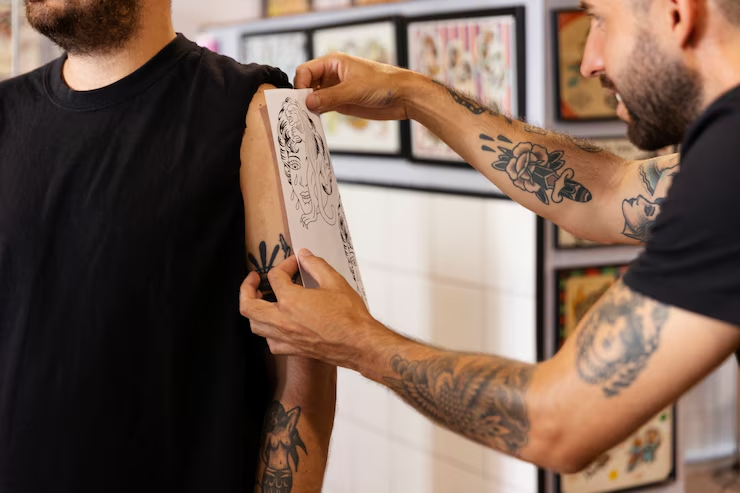
Even in the most comfortable placements, getting tattooed isn’t exactly a day at the spa. But the awesome thing about tattoo pain? It ends the second your artist lifts the needle. Meanwhile, you’ll have amazing art on your body for decades to come!
For your first tattoo, there’s absolutely no shame in choosing a less painful spot. You’ve got your whole life to work up to those spicier placements – if you even want to. Plenty of heavily tattooed people strategically avoid the most painful areas even after years of collecting ink!
Start with something comfy, see how you handle it, and go from there. Your tattoo journey is yours alone, so do what feels right for your body and pain tolerance. And remember – even the most hardcore tattoo collectors were first-timers once!
